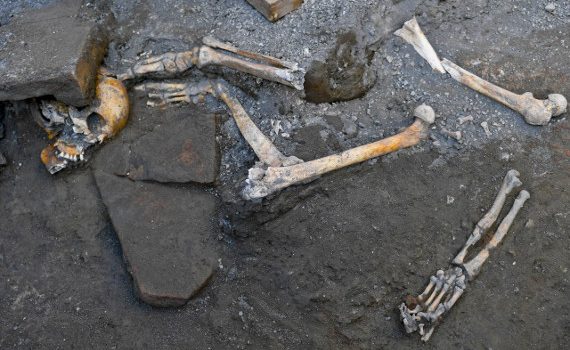The room of the skeletons and sacking by ancient grave robbers
There are skeletons turned over, twisted and dragged without scruples by grave robbers, in search of precious objects which Pompeians took with them in their desperate escape from the eruption. As if the horrendous end which awaited them were not enough, the victims of Pompeii had to suffer desecration at the hands of looters, who in modern times tunnelled through the ash and lapilli which had buried the ancient city, in search of valuable objects in unexplored domus. It was in this manner that, in a room of the recently excavated ‘House with the Garden’, the skeletal remains of at least 6 individuals have re-emerged, piled up and scattered across various points in the room. That is why the skull of one of the victims, crushed by roof tiles, lies alongside the upper and lower limbs of another individual, still in situ, while the remains of a ring worn on the finger and other small handheld objects, spared from looting, resurfaced at a distance and not connected to the rest of the body.
The Pompeians had sought refuge within the innermost room of the house which, unlike the others, held out against the initial phase of the eruption (the rain of lapilli). They were subsequently caught up in one of the pyroclastic flows which overwhelmed the rooms of the house still emerging from the lapilli, causing the collapse of the roof and the upper part of the room’s northern wall.
The presence of one or more tunnels from prior excavations (perhaps earlier than the official works began in 1748), which caused the disturbance to the interested skeletons, is indicated by the holes in the walls. Such revelations are allowing us, thanks to ongoing interventions, to document the history of an age of excavation in great detail (from illicit excavations to those of the Bourbon era) which was completely different from the current one, both in terms of the methodological approach and the objectives.


